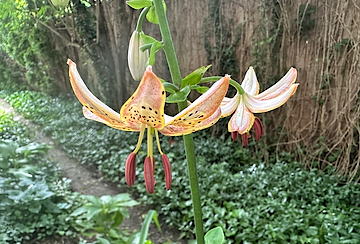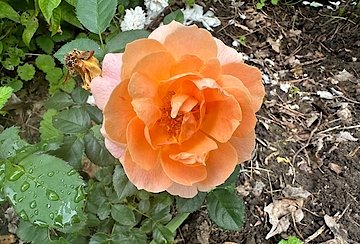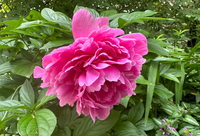
Perennial Division

Division is a common method for multiplying herbaceous perennials, though certain plants such as hellebores, coral bells, lupines, and goatsbeard are sensitive to root disturbance.
Perennial division benefits both the gardener and the plants themselves by maintaining their youth and vitality and preventing overcrowding.
Also, if a plant grew too much, that is a good sign it adapted to thrive under your garden conditions, which is an implied guarantee its offspring will too.
Perennials need to be divided every four or five years, and they show it by growing big woody clumps that hollow up in the middle.
When this happens, remove the entire root system, break up the clump into several parts with roots attached, and plant them separately.
Avoid disturbing plants during their active season by dividing summer and fall perennials in the spring and spring perennials in the fall.
The new plants may exhibit some transplant stress. Be patient with them while they look pathetic, and don't worry: they eventually recover.
Speaking of perennials which don't like their roots disturbed, peonies are a perfect example. Their large clumps live eighty years, and grow very long tap roots. You can take root cuttings, but do so while the plant is still young, make sure the pieces have at least two eyes, and prepare to wait three years for the clumps to get back in shape: first year sleep, second year creep, third year leap.

Cuttings

This is the favorite propagation method of professional growers, because it allows for the mass cloning of plants.
Cuttings can be taken from the stems, leaves or roots, and rely on the plants' self-preservation mechanism which prompts them to regrow their roots or stems.
Soft cuttings are taken from the green and flexible stems of plants like mint, basil, mums, rosemary or lavender. These plants readily grow roots when placed in water. Change the water daily to give them fresh oxygen and prevent the spread of bacteria, and place the cuttings in bright light to encourage root growth.
Hard cuttings are taken from woody shrubs like lilacs, roses, and weigela. Cut a 6 inch woody, but still green stem with at least five leaves, bruise the ending before planting, and cover it with a glass jar to maintain even moisture. Rooting powder, honey, or sticking the stem in a potato can help the cuttings along, although I have to say, the potato always wins. You know the cutting grew roots if it shows fresh growth.
For root cuttings, dig around the plant until you expose a lateral root, at least pencil thick, cut it from the base, divide it into 4-inch pieces with one or two eyes and replant them. This method works for phlox, Japanese quince, lilacs and poppies.
African violets and hydrangeas are best propagated using leaf cuttings. Choose long-stemmed young leaves that won't be easily uprooted and ensure consistent moisture levels.
